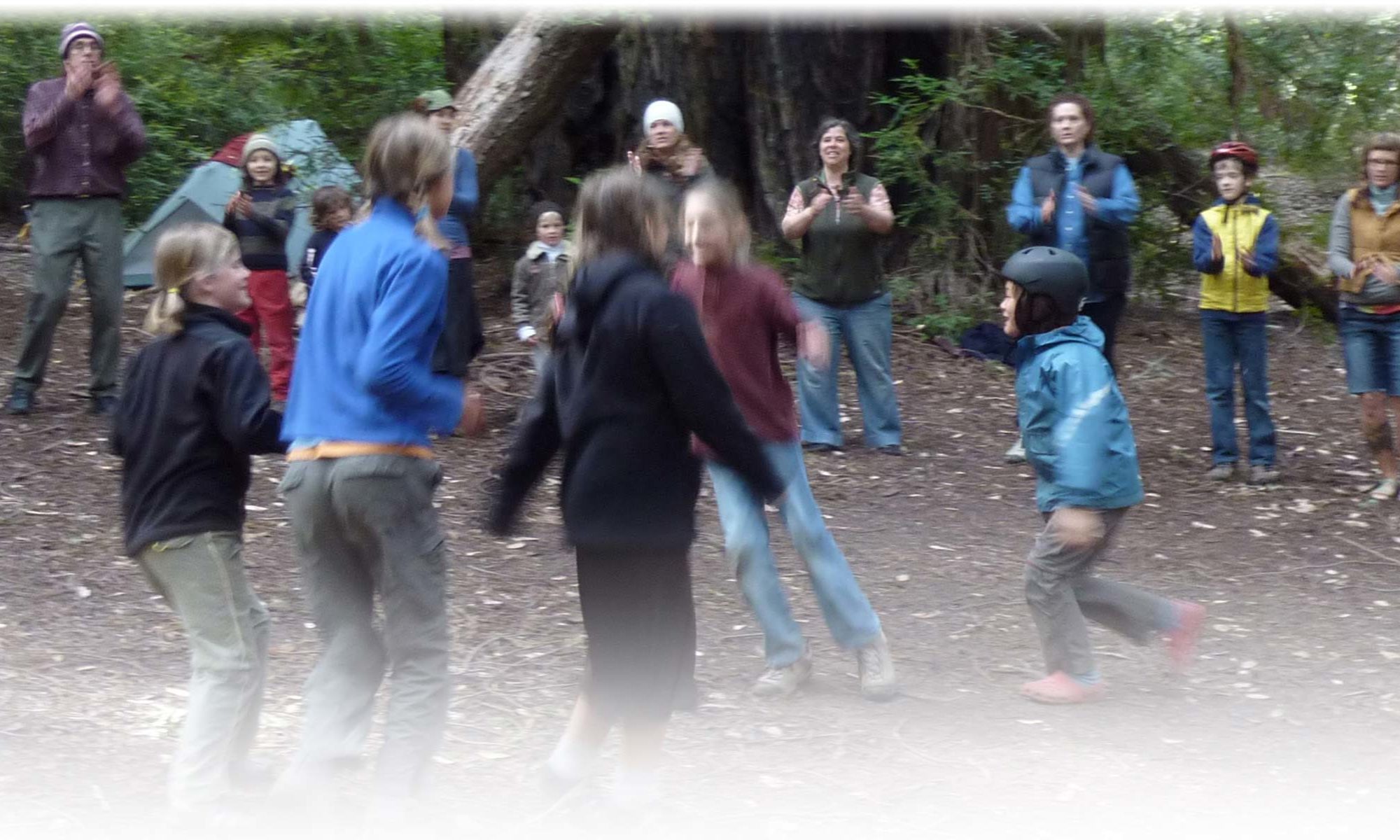Here are some common questions and answers about NBOG!
Q: How is NBOG structured?
A: NBOG is composed of four multi-age (K-2, 2-5, 5-7, 7-9+), interrelating groups facilitated by four ongoing teachers, guest teachers and parent volunteers.
Q: Who are the teachers?
A: NBOG’s four teachers boast a combined 100+ years of teaching experience working with kids and families in a variety of traditional, alternative, and home schooling-settings. Each teacher has directly taught and counseled home-schoolers for at least a decade. To read more about our teachers visit our teachers page here.
Q: When and where does NBOG meet?
A: NBOG meets on Fridays for 28 weeks from mid-Sept. -mid-May, from 10:00am – 3:00pm (2:30pm for K-2). Our home is Henry Cowell Redwood State Park in Felton CA, but we have also traveled to the beach, the Baylands, and to other South SF Bay Area and Monterey Bay Area parks to experience different habitats.
Q: How much does NBOG cost?
A: NBOG is a 9-month commitment (Sept.-May). Tuition is $1600 for the year, payable up front or in installments. This cost covers all instruction and materials. Families enrolled in Ocean Grove Charter School are invited to use their instructional funds to pay for NBOG!
Q: How do I find out more?
A: For a full class description, sample summaries from previous classes, and registration, please email Marcy Reynolds at marcy@baymoon.com
Q: Why should I make nature-based education a priority in my child’s homeschooling?
A: Here is a sampling of research that is providing convincing evidence of the significant benefits of experiences in nature to children in several developmental areas…
- Exposure to natural environments improves children’s cognitive development by improving their awareness, reasoning and observational skills (Pyle 2002).
- Children that have contact with nature score higher on tests of concentration and self-discipline (Wells 2000, Taylor 2002).
- When children play in natural environments, Their play is more diverse with imaginative and creative play that fosters language and collaborative skills (Moore & Wong 1997, Taylor, et al. 1998, Fjotoft 2000).
- Children who play regularly in natural environments show more advanced motor fitness, including coordination, balance, and agility, and they are sick less often (Grahn, et al. 1997, Fjortoft 2001).
- Nature helps children develop powers of observation and creativity and instills a sense of peace (Crain 2001).
- Early experiences with the natural world have been positively linked with imagination and a sense of wonder (Cobb 1977, Louv 1991).
- Wonder is an important motivator for lifelong learning (Wilson 1997).
- Children who interact in nature have more positive feelings about each other (Moore 1996).
- Natural environments stimulate social interaction between children (Moore 1986, Bixler, Floyd & Hammutt 2002).
- Outdoor environments are important to children’s development of independence and autonomy (Bartlett 1996)
- Nature buffers the impact of life stress on children and helps them deal with adversity. The greater the amount of nature exposure, the greater the benefits. (Wells 2003).
For more details about our program, from our age-alike groups on normal field days, to our yearly calendar and daily schedule, please download our Program Description!
